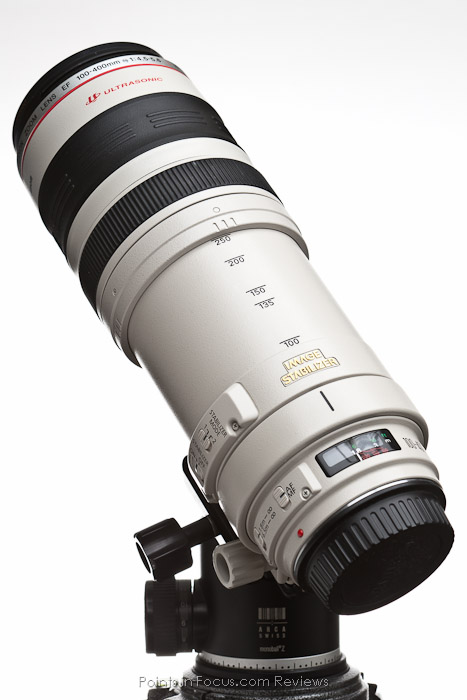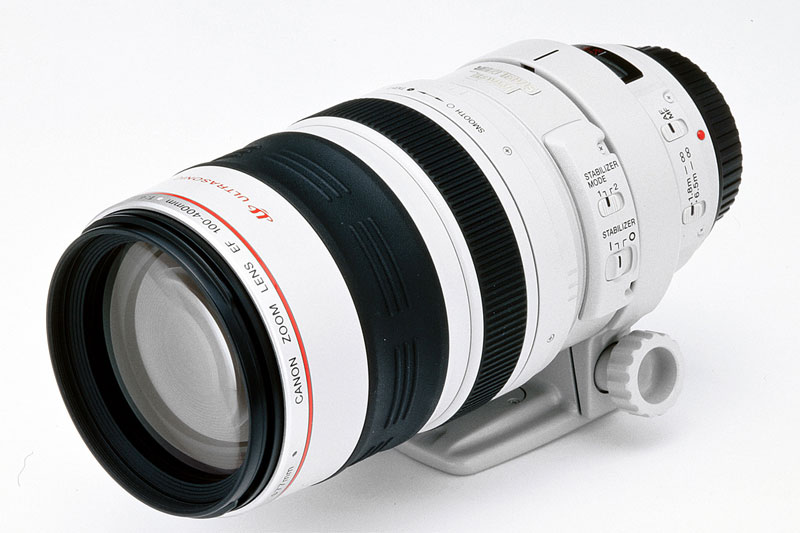Canon EF 100-400mm f/4.5-5.6L
CANON EF LENS
While the original version has excellent optical performance, its design predated the mass-market availability of digital single-lens reflex cameras. The telescoping nature of the original design means that the lens zooms quickly, although not all users prefer this design.[
...although it's a compromise, it’s a very good compromise. It’s nearly as sharp as the [300 mm and 400 mm] primes and far sharper than a consumer lens. The huge range means getting the shot framed just right and not having to change lenses, and it’s relatively small and easy to shoot hand-held.[1]
The telescoping design means that the lens sucks in air when zoomed from shorter focal lengths to longer focal lengths. Unfortunately, with the lack of anything to prevent it, it also sucks in any airborne dust[2]
This lens is compatible with the Canon Extender EF teleconverters on newer EOS bodies. Autofocus works with the 1.4× Extender (and only with cameras that can autofocus at f/8) and image stabilization (IS) works with both 1.4× and 2× Extenders.
| Principal specifications |
| Lens type Zoom lens |
| Max Format size 35mm FF |
| Focal length 100–400 mm |
| Image stabilization Yes (2 stops) |
| Lens mount Canon EF |
| Aperture |
| Maximum aperture F4.5–5.6 |
| Minimum aperture F32–40 |
| Aperture ring No |
| Number of diaphragm blades 8 |
| Optics |
| Elements 17 |
| Groups 14 |
| Special elements / coatings Fluorite and Super UD-glass elements largely eliminate secondary spectrum |
| Focus |
| Minimum focus 1.80 m (70.87″) |
| Maximum magnification 0.2× |
| Autofocus Yes |
| Motor type Ultrasonic |
| Full time manual Yes |
| Focus method Rear |
| Distance scale Yes |
| Focus distance limiter Yes |
| Physical |
| Weight 1380 g (3.04 lb) |
| Diameter 92 mm (3.62″) |
| Length 189 mm (7.44″) |
| Materials Magnesium |
| Sealing Yes |
| Colour White |
| Zoom method Push/Pull (extending) |
| Power zoom No |
| Zoom lock Yes |
| Filter thread 77 mm |
| Hood supplied Yes |
| Hood product code ET-83C |
| Tripod collar Yes |
| Other |




